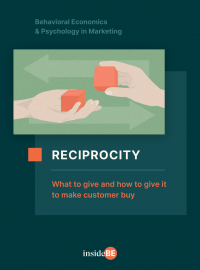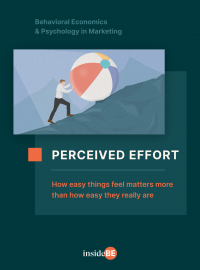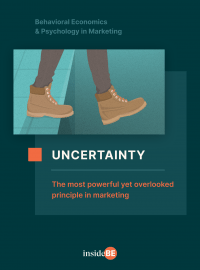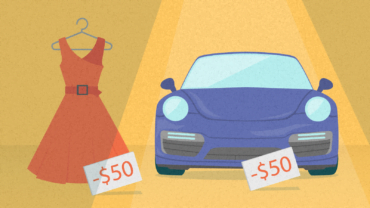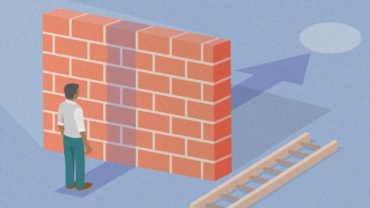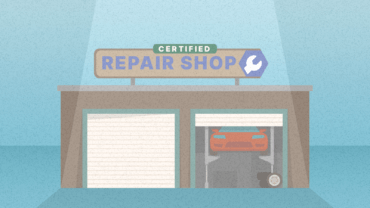4 Behavioral Tips to Make Waiting in Line More Bearable and Improve Customer Experience
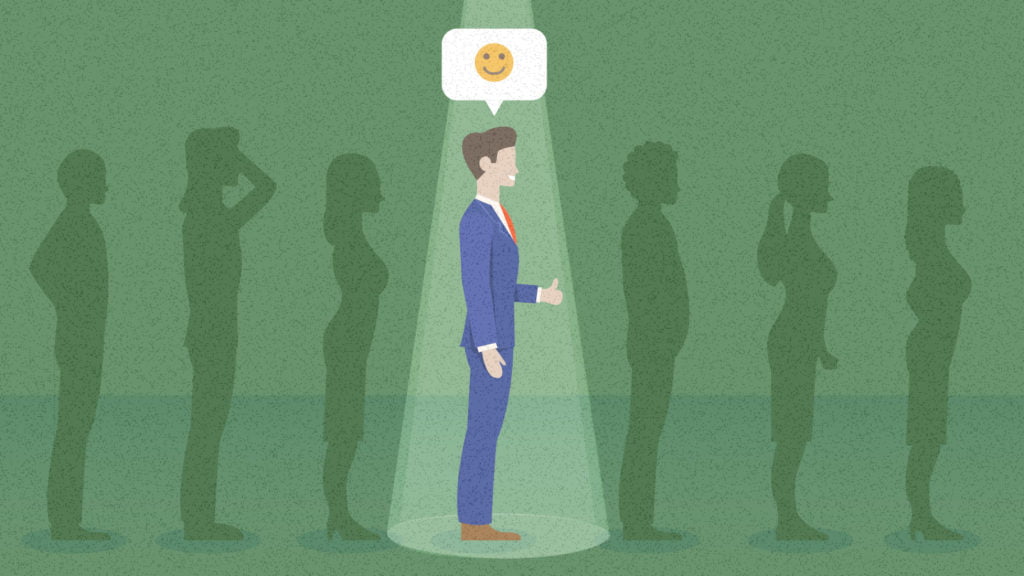
If your service is top-notch in other areas, it would be a real shame if your customers’ experience was ruined by mishandled waiting. With the right use of psychological research, you can make waiting much less of a hassle for your customers.
In this article, you’ll discover:
- How to make people feel like their waiting time is shorter even though it’s actually no different than before;
- How making people walk six times farther actually improved their customer experience;
- Why providing customers with any reason for why they need to wait is better than giving no reason at all; and
- How to easily improve your customers’ experience by removing their uncertainties.
They say that patience is a virtue. But honestly, whoever said that probably didn’t have an unhappy customer waiting on the other end of the line. So, let’s forget about that saying for a while and admit that waiting is often just annoying and frustrating. And as science unsurprisingly shows, it can cause the whole customer experience to go downhill fast.
But that doesn’t have to be the case. As you have surely experienced, from time to time there are situations when waiting doesn’t feel so long, even though objectively it still takes time. Thanks to behavioral science, we know what it takes to create such an experience.
So, without further ado, here are 4 consumer psychology and behavioral economics tips on how to improve customer experience by making waiting a lot more pleasant for your customers.
Also, check out this article for tips on how to make waiting more bearable in an online environment.

Discover ground-breaking ideas and fascinating solutions.
1. Get people started
Whatever the customers need to wait for, get them started on the activity as soon as possible. “Duh”, you might think. “Of course I want them to start. I want the waiting time to be as short as possible”.
Yes, but the trick is, they don’t actually need to start. Just the feeling that they have started is enough. There’s a thing in Disney parks called staging areas. While people are waiting in line for an attraction, staff (dressed as Disney characters) approach them to set the scene. This is the place where customers are asked to split into teams, decide the team roles and so on.
As they’re already engaged while waiting in line, they feel like the attraction has already started. To find out about some other ways Disney uses psychology to create a magical experience, be sure to check out this article about how they have perfectly mastered the psychology of waiting.
How quickly the customer is approached impacts the customer’s willingness to recommend the brand to others.
Another example of how to get people started can be seen in a walk-in clinic. While people were in the waiting room, waiting to be seen by a medical service provider, they were approached by the nurse first. The nurse recorded the patient’s name, symptoms and identified whether the patient should be checked by the doctor or a registered nurse.
While the actual waiting time to see the medical provider did not change, surveys showed that patients felt it had and were pleased by this.
It’s good to get people started as soon as possible. Internal research at AT&T found that how quickly the customer is approached impacts the customer’s willingness to recommend the brand to others.
There are plenty of ways of doing this – letting the customers unload a cart while there are still people ahead in line, giving customers a menu to look at while waiting to be served, taking patients from the waiting room to an exam room to wait for the doctor there, or a voicemail greeting customers when they call, asking them to fill out paperwork before reaching the service agent.
Anything that makes your customers feel like the activity they came for has already started is a good beginning. That brings us to another tip.
2. Keep your customers occupied
Let’s imagine you finally got to go on holiday after what seemed like a year spent in hell. After a relatively pleasant flight, you arrive at your dream destination, and then, the most boring part comes – waiting for your baggage. You’re just standing there, staring at the empty baggage carousel while nothing happens. It feels like forever. The people around you are getting restless as well.
At Houston airport, this issue was so big that passengers regularly filed complaints about the long waiting times. Executives noticed one thing – even though passengers were waiting around 7 minutes at the baggage claim, it took them just one minute to get there from their gates.
The solution they came up with may not seem to make any sense at first glance – they moved the arrival gates farther from the terminal and sent the bags to the farthest carousel. This made the passengers walk six times longer.
The actual time between getting out of the plane and getting the baggage didn’t change. But the number of complaints dropped to nearly zero. Why? Because in this new setting, passengers spent the majority of the time occupied. And as (not only) behavioral economics research shows, with an occupied mind, time feels like it goes faster.
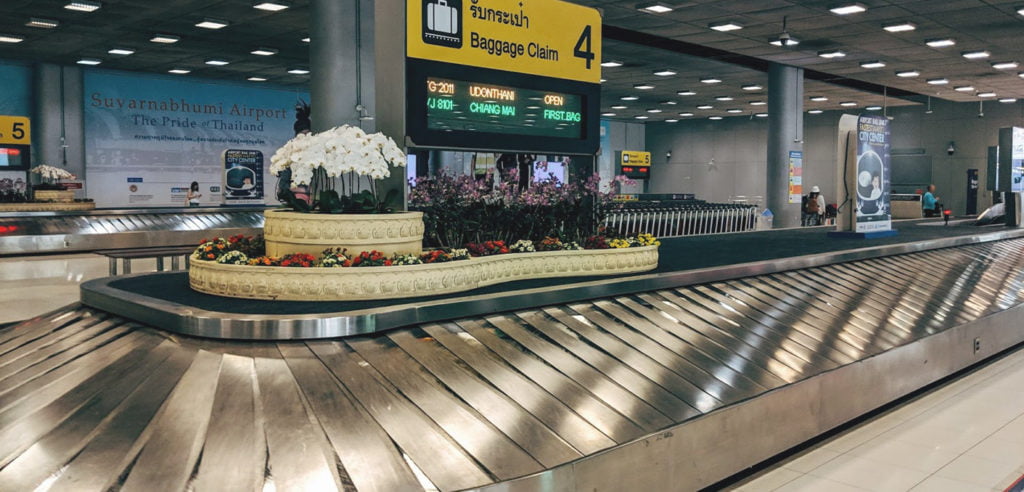
Source: Unsplash
This airport example is one of the favorite creative uses of behavioral insights of Matej Sucha, CEO of MINDWORX Behavioral Consulting. If you want to learn about more case studies like this one, you should check out this article on The 6 Most Creative Nudges According to Experts
There’s often no need to make big logistical changes as in the above example. A study exploring the perception of waiting time in retail found that simply putting a TV with random content (like a weather forecast) above the cash register in a drug store can also work its magic.
It made customers feel like the time spent waiting in line for the checkout was shorter when compared to customers who did not have a TV there, simply because their minds were occupied.
Customers felt like the time spent waiting in line for the checkout was shorter when compared to customers who did not have a TV, simply because their minds were occupied.
What’s more, the authors tried it again, this time in a restaurant context, to try to find out whether the type of content made a difference. While customers were waiting in line to be seated in an Italian restaurant, they either had no TV screen there, a TV with random content, or a TV with context-congruent content – a video about preparing pizza.
While having a TV with both random and congruent content made the customer feel like time ran faster, the congruent content was even more effective.
What about call center customers waiting while all operators are busy? There’s a long tradition of research showing the music playing in the background can influence the perceived waiting time. However, a study by Whiting and Donthu showed how to make this even more effective.
According to their results, music didn’t influence the perceived waiting time unless the callers could choose the music according to their taste. Giving people more than one option has been proven to not only increase sales and improve customer retention strategy but can help improve the overall customer experience of your service as well.
One of the reasons nobody likes waiting is that we all have better things to do. That was something that The General Automobile Insurance Services realized. They were dealing with unexpected spikes in call volume, which led to increased hold times, high abandon rates, and frustration.
What better way of keeping people occupied than letting them take care of their own business? What the company did was simply provide the customers with an option to schedule a phone call via the online call-back widget on The General’s website or by pressing 1 on their phone. The call center held their place in line and called them back when it was their turn.
This way, although customers didn’t get to the call center agent any sooner, at least they could do whatever they wanted during that time, instead of just waiting on the line.
Anything that will draw customers’ attention away from waiting, such as putting a TV or magazines in the waiting room, or making small talk with them while checking something, is better than the waiting itself.
3. Explain to customers why they need to wait
This might seem like a no-brainer, but many companies are really not that great at communication with their customers. For example, Asana really failed to make their customers act. Spoiler alert – one of the main causes was that customers didn’t see a reason why they had to.
And the same thing applies when it comes to waiting. When customers need to wait, you need to tell them why.
Let’s go back to the holiday situation. It was just what you needed. You’re now all rested, waiting for your flight back home, when you suddenly find out that it’s delayed. First, it takes 30 minutes, then an hour, an hour and a half…
When customers need to wait, you need to tell them why.
What would you prefer – confused, frustrated staff running around unable to answer repeated questions, or a flight attendant politely informing you that a bird crashed into the plane (yep, that’s a thing) so the standard procedures would take longer than usual?
You’re not the only one who prefers knowing what’s going on instead of waiting tensely. Knowing the reason can reduce anxiety, and as research shows, anxious waiting seems longer.
Plus, there’s a thing in behavioral science called fundamental attribution error (also known as correspondence bias) – we tend to draw conclusions about someone’s personality from their actions, and we fail to consider the situation the person is in.
Just remember the last time you were driving and someone aggressively overtook you. What was your first thought? That the driver was an irresponsible fool and should be stripped of his driver’s license? Or did you calmly say to yourself that he must have been in some difficult situation – maybe his mother was in hospital and he was speeding there to make sure she was okay.
If you don’t tell your customers the reason for their waiting, they will direct their anger towards you. But once the reason is clear, the customers switch from “this freaking airline” to “those freaking birds”. Suddenly, you’re not the cause of their frustration anymore.
If you don’t tell your customers the reason for their waiting, they will direct their anger towards you.
The fact is, any given reason is better than none, as shown in a famous psychological experiment from the late 70s. Researchers were exploring what it takes for people to be okay with someone cutting in line. They approached people waiting in line for a copy machine and asked them to let them use it first.
When providing no reason at all, only 60% of people let them cut in line. The percentage rose to 94% when they explained that they had an important meeting in 5 minutes and needed to make copies urgently.
But they also tried a silly reason – “Do you mind if I use the xerox machine before you because I have to make copies?” And it truly is a silly reason – of course, everybody was waiting in line because they needed to make copies. But in this case, 93% of people let the researcher skip ahead.
If your customers need to wait, don’t hesitate to communicate the reason proactively. Customers’ experience will be much better if they know why they are waiting.
4. Let the customer know how long it’s going to take
Uncertainty
Uncertainty is a situation when your customer has incomplete or missing information. A situation when their questions, concerns, and fears aren’t answered.
But how about waiting for a call agent? Telling customers that the reason for waiting is that operators are busy might not be enough, as that really goes without saying. In this case, you need to explicitly tell your customers how many people are in line before them and approximately how long they will need to wait.
That way you eliminate your customers’ uncertainties. In behavioral economics, uncertainty is a well-known, hard-wired cognitive bias. If people don’t know what’s happening, they feel endangered and tend to get out of such situations. Not exactly the customer experience any business is looking for!
You need to explicitly tell your customers how many people are in line before them and approximately how long they will need to wait.
Let’s improve the airport’s communication about the delayed flight from the earlier example even further. How about if the flight attendant told you the reason for the delay, but also assured you that you would be boarding in the next 20 minutes? With the uncertainty removed, you would feel even less anxious.
Removing uncertainty is always a good idea and it helps in multiple contexts. For example, check out this article about how it can be a crucial step when trying to improve your customer retention, or this case study about how removing uncertainties helped an insurance company to increase conversions by a stunning 300%.
If you want to know more about this concept and how to apply it in various parts of your business, be sure to check out this book, where uncertainty is explained in more depth.
Key takeaways:
- Make your customers feel like whatever they came for has already started. Even unloading a shopping cart or filling out paperwork while they’re waiting will make them feel the time is passing more quickly.
- Keep your customers’ minds occupied. Time feels like it runs faster when we have something to do.
- Tell customers the reason why they are waiting. Without knowing why, customers will blame you for their frustration and the waiting will seem even longer.
- Remove customers’ uncertainties by telling them how long something will take. Any uncertainty the customers may feel can frustrate them and make the whole experience worse.

